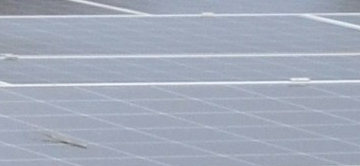Policymakers’ efforts to clean up electricity production have often aimed to substitute fossil fuels with renewable sources. Unfortunately, electricity produced from wind turbines and solar panels is highly unpredictable. Stefan Ambec is an INRA research professor at TSE and member of the IDEI. With TSE’s Claude Crampes, he has produced the first analytical assessment of energy policies that tackles the problem of intermittent production.
Various policy instruments have been adopted to decarbonate electricity production: while several countries tax their CO² emissions, the EU caps them with tradable allowances.
The type of support for renewables also differs. US states tend to opt for renewable portfolio standards (RPS) programmes which generally require a minimum fraction of electricity demand to be met by renewable sources. Most European countries have opted for the feed-in tariff (FIT), purchasing renewable electricity at a price fixed well above the wholesale price. FITs have been quite successful in fostering investment in wind and solar power in Europe, although the price difference is generally covered by a tax on consumers.
The unpredictability of wind and solar energy makes power dispatching more challenging. Supply must match demand in real time, whereas price signals do not change as quickly. Even if wholesale electricity prices vary with electricity provision, the retail prices that consumers pay do not. Even if prices could vary with weather conditions, most consumers will not instantly react to price changes.
Policy instruments
Stefan and Claude consider a model with two sources of energy: one is clean but intermittent, whereas the other is reliable but polluting. They analyse the impact of three policy instruments in a competitive electricity industry: a carbon tax on fossil fuel, FITs and RPS programmes.
By increasing both the operating cost and the price of electricity produced by thermal power, a carbon tax makes renewable energy more competitive and reduces electricity production from fossil fuels. It increases investment in wind power and reduces thermal power facilities. Yet the total production capacity from both sources of energy may increase.
Both FITs and RPS enhance the penetration of renewables into the energy mix. When they are designed to target the efficient share of renewable sources of energy, they induce too much electricity production, investment in thermal power and environmental pollution. They should be complemented by a tax on electricity or fossil fuels. In particular, the tax on electricity that only finances the FIT is not high enough to obtain an efficient energy mix. Alternatively, the efficient FIT raises more money than is strictly necessary to balance the industry costs.
Market power
Stefan and Claude also show that if a monopolistic thermal-power producer faces competition from a fringe of wind-power producers, this does not alter its ability to exert market power. Worse still, competition from wind power encourages the fossil-fuel producer to reduce production capacity so that it can charge the monopoly price when windmills are not spinning. This increases the retail price of electricity.
Regulation is thus required to improve welfare even with competition from wind power. Stefan and Claude point out that the carbon tax that would fix the two market failures – the exercise of market power and the environmental externality – should vary with the availability of the intermittent source.
Smart solutions
This model allows Stefan and Claude to identify the social value of technological solutions for the intermittency problem. Energy storage, such as pumping water into upstream reservoirs, reduces the burden of intermittency. The marginal value of energy storage depends on the cost difference between intermittent and reliable sources of energy.
Smart meters with load-switch devices and batteries also help consumers to adapt to price changes. Making consumers reactive reduces production costs − including the back-up equipment cost and the environmental cost of thermal power – but it exposes risk-averse consumers to price fluctuations. Such risk-exposure effects should be incorporated into the cost-benefit analysis of installing smart meters.
Looking foward
Much more can be done within Stefan and Claude’s framework. Diversification can mitigate intermittency. Using a similar model in a 2012 paper, Stefan and Claude have shown that it is optimal to invest in two different intermittent sources that do not produce energy at the same time, even if one is more costly. Similarly, investing in wind or solar power at different locations, or using other intermittent sources such




